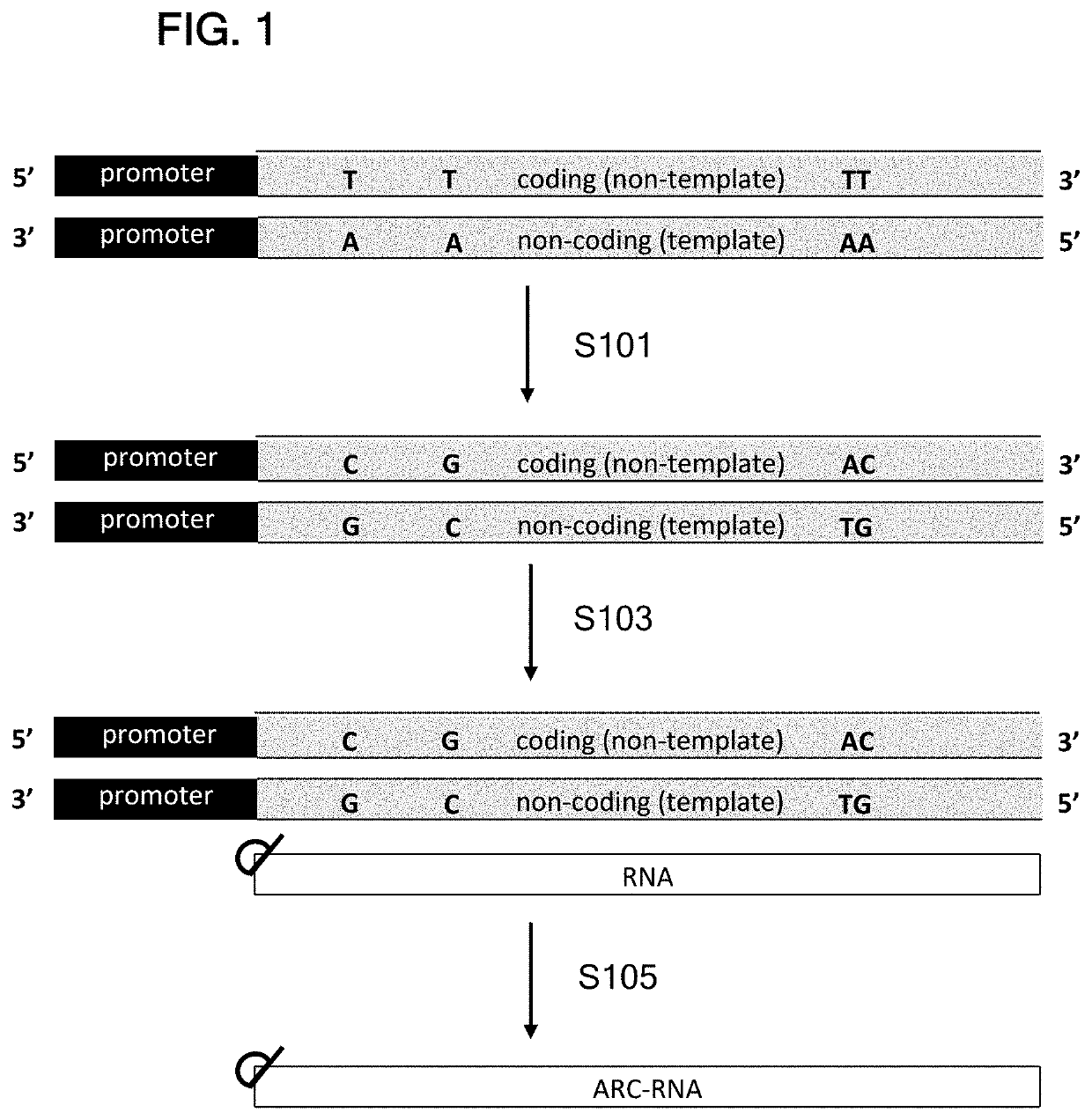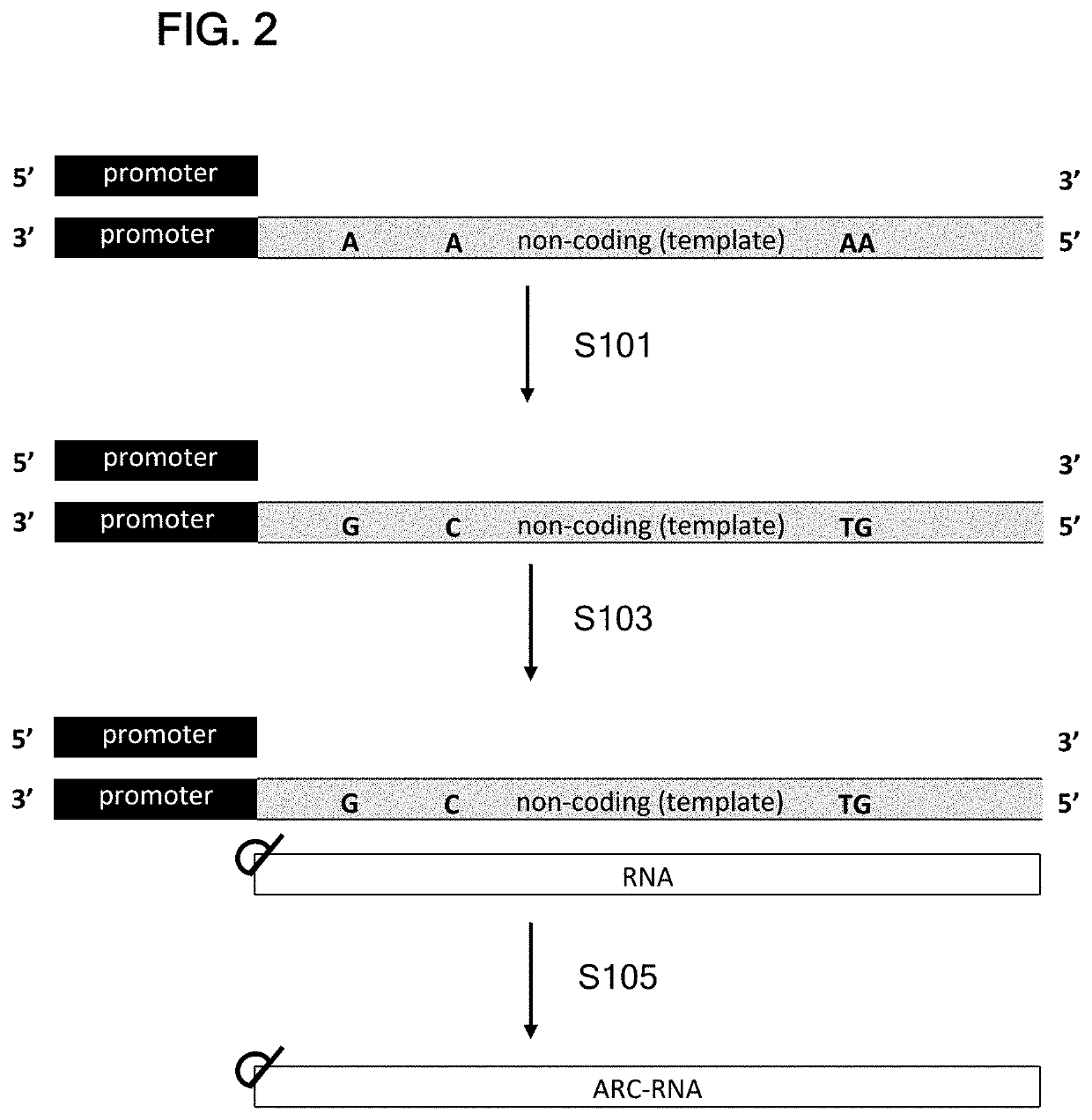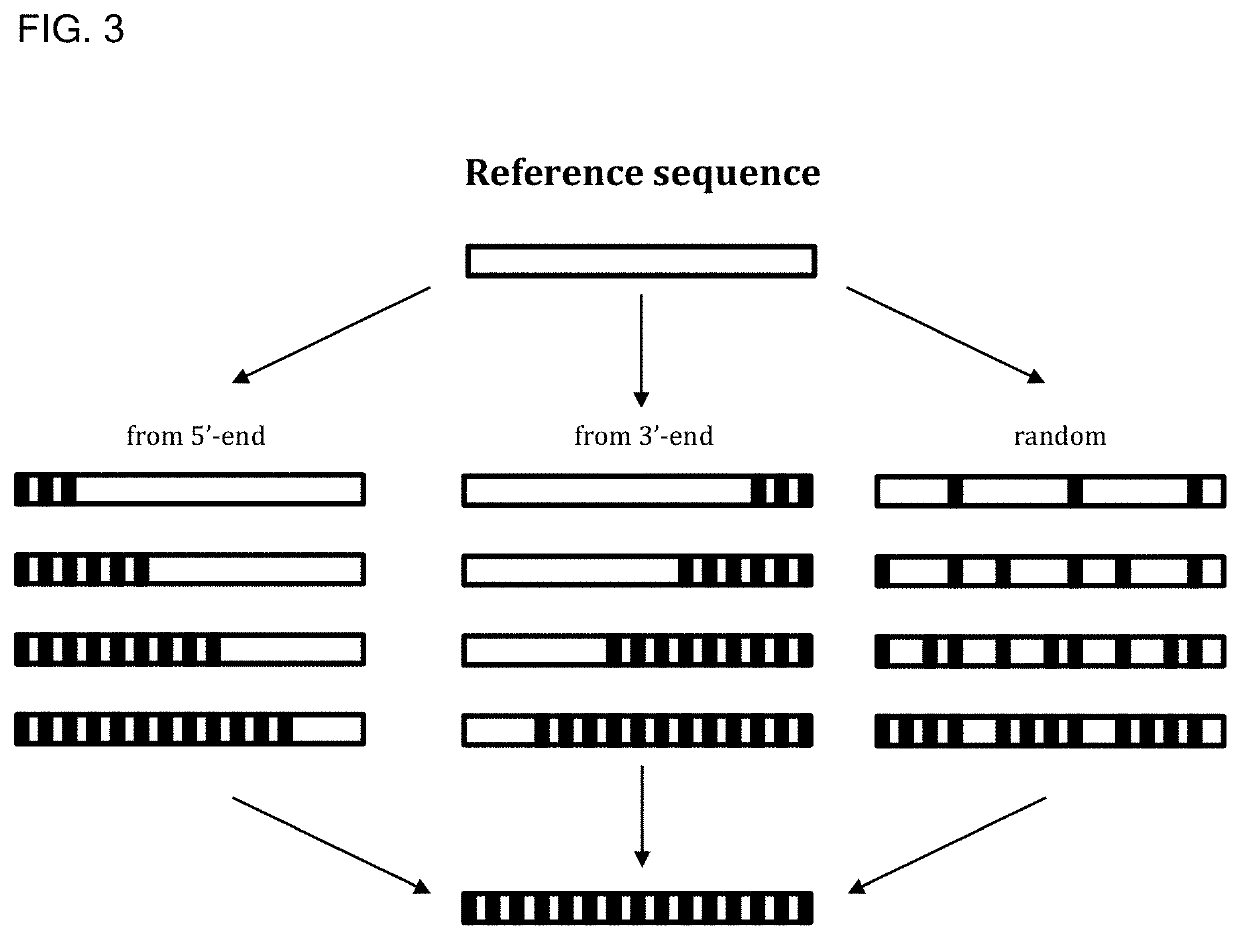Translatable molecules and synthesis thereof
a technology of translatable molecules and synthesis methods, applied in the direction of hormone peptides, peptide sources, peptide/protein ingredients, etc., can solve the problems of general lack of predictability for modification or change in chemical structure to modulate, long time-consuming and labor-intensive problems, and achieve the potential of rna therapeutics. long-term success
- Summary
- Abstract
- Description
- Claims
- Application Information
AI Technical Summary
Benefits of technology
Problems solved by technology
Method used
Image
Examples
example a
xample for Templates
[0507]pIDT-SMART(Kan) (1962 bps, IDT DNA) was modified by point mutations to remove NotI and MluI restriction sites. At EcoRV site, the resulting plasmid was inserted with a 1226 bp DNA fragment containing the following DNA elements: stuffer DNA+T7 RNA promoter, 5′ UTR from Tobacco Etch Virus (TEV), human EPO ORF, sequence containing 3′ UTR from Xenopus beta globin (XbG) gene, polyA120, and BspQI restriction enzyme site+T7 terminator+stuffer DNA.
[0508]The resulting parental plasmid (pIDT-SMART-T7-TEV-hEPO-XbG-pA120) had total length of 3188 bps. The parental plasmid was used to clone the alternative ORFs.
[0509]Constructs containing TEV 5′UTR were constructed as follows. For Fluc, hEPO, and cmEPO constructs, the plasmid was linearized with NcoI and XhoI, and the synthesized ORF DNA fragments with NcoI and XhoI site were inserted by T4 DNA ligase. For hAdipo, hAAT, and F9 constructs, the synthesized ORF DNA fragments contained 20-25 bp of plasmid sequences flanking...
example b
and mRNAs for hEPO
[0515]FIG. 4 shows the results of surprisingly increased human EPO protein production for a translatable molecule of this invention. Human EPO ARC-RNA was synthesized using a DNA template having reduced deoxyadenosine nucleotides in an open reading frame of the template strand, as well as reduced complementary deoxythymidine nucleotides in the non-template strand (reduced T). The synthesis was also carried out with 5-methoxyuridines (5MeOU, 100%). The ARC-RNA was transfected into HEPA1-6 cells using MESSENGERMAX transfection reagents. The cell culture medium was collected 24 hrs after transfection. ELISA was used to detect the protein production with the ARC-RNA (5MeOU) as compared to wild type mRNA with similarly reduced T.
[0516]FIG. 4 shows surprisingly high translational efficiency of the ARC-mRNA (5MeOU) compared to the wild type hEPO mRNA (UTP). First, the ARC-mRNA (5MeOU) exhibited superior expression efficiency at all levels of template T composition as comp...
example c
and mRNAs for hF9
[0523]FIG. 5 shows the results of surprisingly increased human F9 protein production for a translatable molecule of this invention. Human F9 ARC-RNA was synthesized using a DNA template having reduced deoxyadenosine nucleotides in an open reading frame of the template strand, as well as reduced complementary deoxythymidine nucleotides in the non-template strand (“reduced T”). The synthesis was also carried out with 5-methoxyuridines (5MeOU, 1000). The ARC-RNA was transfected into HEPA1-6 cells using MESSENGERMAX transfection reagents. The cell culture medium was collected 24 hrs after transfection. ELISA was used to detect the protein production with the ARC-RNA (5MeOU) as compared to wild type mRNA with similarly reduced T.
[0524]FIG. 5 shows surprisingly high translational efficiency of the ARC-mRNA (5MeOU) compared to the wild type hF9 mRNA (UTP). First, FIG. 5 shows that ARC-mRNA (5MeOU) products exhibited surprisingly superior expression efficiency at levels of ...
PUM
 Login to View More
Login to View More Abstract
Description
Claims
Application Information
 Login to View More
Login to View More - R&D
- Intellectual Property
- Life Sciences
- Materials
- Tech Scout
- Unparalleled Data Quality
- Higher Quality Content
- 60% Fewer Hallucinations
Browse by: Latest US Patents, China's latest patents, Technical Efficacy Thesaurus, Application Domain, Technology Topic, Popular Technical Reports.
© 2025 PatSnap. All rights reserved.Legal|Privacy policy|Modern Slavery Act Transparency Statement|Sitemap|About US| Contact US: help@patsnap.com



